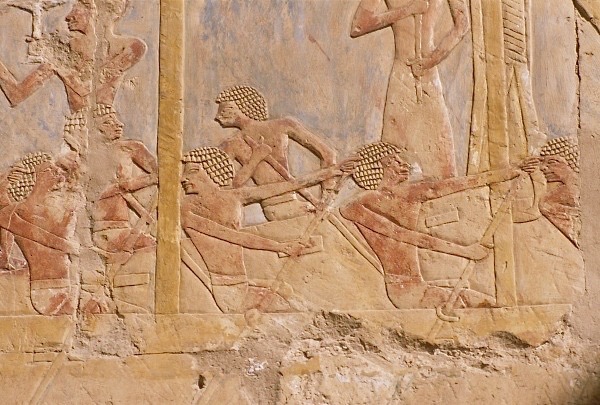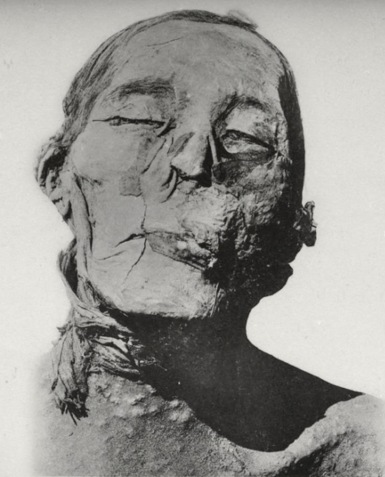
2 March 2018
Tim Koch is still in denial.
In my recent post on the Nile Boat Races of the 1970s and early 1980s, I was rather dubious about some of the attempts by the Egyptian Ministry of Tourism to draw parallels between modern rowing races and those allegedly held in Ancient Egypt. Although his field of expertise is Ancient Rome, the rather better informed Professor Boris Rankov was less cynical:
given that there were certainly lots of human-powered boats around on the Nile for several millennia, it’s hard to imagine that there would not have been at least some informal or ad hoc racing, so the Egyptian Tourist Board was perhaps only bending the known facts slightly.
The Greek historian, Herodotus, said that ‘Egypt is the gift of the Nile’. The River Nile runs for 750 miles north-south along the whole length of the country and it provided Egypt not only with famously fertile soil but also with fast and easy transportation of goods and people. As the Nile flowed northwards and the wind blew southwards, many boats had both oars and sails, enabling a craft going to the Nile delta to row downriver with the current, and then to return by hoisting the sail and letting the wind do the work.

Thus, boats were a vital part of ancient Egyptian life and this meant that they were also of enormous symbolic value in religious belief. Boats were one of the primary means by which the Gods themselves traversed the heavens and the underworld, while on earth their images were carried from temple to temple in such vessels. Boats also carried the dead from this world to the next. In common with many civilisations, the Ancient Egyptians believed that the dead had to cross a stretch of water to reach the afterlife.

Egyptian Museum, CG 610031
The spiritual importance of boats explains, for example, the unlikely rowing abilities attributed to Amenhotep II, the Pharaoh who ruled Egypt c.1427-1401 BC. An inscribed limestone slab records that Amenhotep was extraordinarily strong and a great sportsman, supreme at horse-riding, archery and rowing:
Strong of arms, untiring when he took the oar, he rowed at the stern of his boat as the stroke-oar for two hundred men. Pausing after they had rowed half a mile, they were weak, limp in body, and breathless, while his majesty was strong under his oar of twenty cubits (nine metres/thirty feet) in length. He stopped and landed his boat only after he had done three miles of rowing without interrupting his stroke. Faces shone as they saw him do this.
Amenhotep’s sporting skills were exaggerated not just to feed his Trumpian ego, they can all be linked to rituals or myths that confirmed his fitness to rule. Thus, in a religious context, his prowess with the oar justified his place in the boats of the gods (less satisfactory for HTBS Types, there is an argument that Amenhotep used his ‘big oar’ simply to steer the boat and that he was not actually rowing).

How did the Egyptians propel boats that were not under sail? In Egyptian Bookshelf: Boats (British Museum, 1995) by Dilwyn Jones, it is said that they were ‘paddled, rowed or poled’. ‘Poling’ was a form of punting of simple light papyrus reed skiffs in shallow waters. As more expensive and sophisticated boats came to be made of wood (perhaps imported cedar from Lebanon) and grew larger, different methods of propulsion were needed. Jones explains the paddling stroke thus:
the paddler first raised his blade above his head and then leaned over the side to reach the water (which) required great stamina. The stroke was not simultaneous, but each man dipped his blade in the water a fraction of a second behind the man in front…
Rowing, when the oar works around a fulcrum, was a later development than paddling.

Scenes from the temple of the Pharaoh Hatshepsut (1507-1458 BC) have been used to reconstruct an Egyptian rowing stroke of this time, the ‘New Kingdom’ period. Jones notes that the oar was suspended in a loop or grommet of leather over the side and was held in a double-handed grip:
The oarsman started his stroke in a standing position, then reached well forward and threw his weight back on the oars simultaneously taking up a seating position on the crossbench. Towards the end of the stroke, the hands were pushed downwards and the blade of the oar brought slowly out of the water before the stroke was recommended. In order to provide the necessary leverage for this continuous circular movement, the oarsmen’s feet must either have been secured to the deck in loops or wedged under the stretchers in front of him. Because of the wear and tear that such a technique inflicted on his clothing, the rower wore a network garment with a square leather patch on the seat over his kilt to protect the fabric from the continuous chafing.
In 1930, CD Jarrett-Bell produced a different theory about the recovery: that the oars were turned sideways on the return stroke and they never left the water, resulting in a short, choppy stroke. He based this on his interpretation of wall pictures – but others insist that the postures shown on the walls were simply ‘artistic convention’.
In Seagoing Ships and Seamanship in the Bronze Age Levant (2008), Shelley Wachsmann notes that:
One advantage of this kind of stroke is that it gives additional room inboard, which is an important consideration if the cargo was carried on deck.
Another theory, however, suggests that the oarsmen actually stood closer to the centre of the deck (giving them better leverage) and that the Egyptian artists simply gave the impression of foreshortening. However, because two or more theories contradict each other, it does not mean that only one can be correct. We talk about ‘Ancient Egypt’, but this is a period that covers c.3000 BC to 343 BC. Thus, any generalisations about the Ancient Egyptian stroke (or the Ancient Egyptian anything) are likely to be inaccurate. Things change over 3000 years and different ways of propelling boats could have existed together or at different times. There is certainly evidence that, in some boats, the oarsmen remained standing throughout the stroke cycle, and in others, they remained seated. An example of fixed seat rowing may be in a model silver boat found in the tomb of the Queen Ahhotep (c.1560-1530 BC).

Interestingly, we do have some modern empirical evidence about standing rowing on an Ancient Egyptian craft. In 2008, marine archaeologist Cheryl Ward and a crew of 24 took a replica of a 66-foot-long, 16 foot-wide boat of the 18th Dynasty (1549-1292 BC) down the Red Sea coast.

Ward’s report on the project for the British Museum is here. The boat had both a sail and oars but, unfortunately for HTBS Types, Ward’s primary interest was not in rowing:
The crew use oars to manoeuvre the ship into position for raising and lowering the sail… Lack of practice demanded that we reduce the rowing crew to fourteen, less than half the number illustrated on (tomb pictures), but with wide enough space for us to avoid catching each others’ oars. Despite our inexperience, we reached 2.5 knots against the wind. Nonetheless, rowing was not a primary propulsion strategy for a 30-ton ship with such a small crew… Instead, we focused on sailing.
However, looking at the pictures below, perhaps Ward gave the oars too short an inboard – meaning that they would have been difficult to pull effectively. If the oars had been longer from the rowlock to the end of the handle, probably with the oarsmen standing further away from the rowlock, and with something for the rowers to brace their feet against (or even seats to use for part of the stroke) more effective rowing may have been achieved.


A final thought on the place of boats in Ancient Egypt. In the boats that carried the dead from this world to the next, Jones (quoting ‘The Coffin Texts’ and ‘The Pyramid Texts’) says that:
the deceased was expected to be an active member of the boat’s crew. He had to row and pilot the boat: ‘I am he who rows and does not tire in the (boat) of (the Sun God) Ra… I take my oar, I row Ra when traversing the sky…’
It is a nice idea that only competent rowers could experience resurrection in the hereafter.

This was a really interesting and informative read!
I have learnt this site exists–only today.